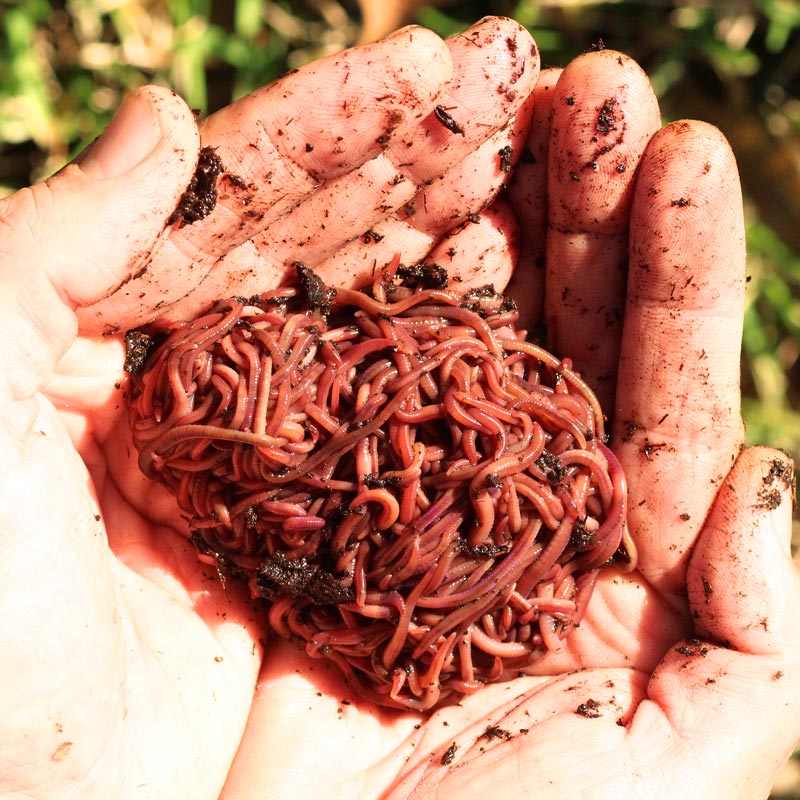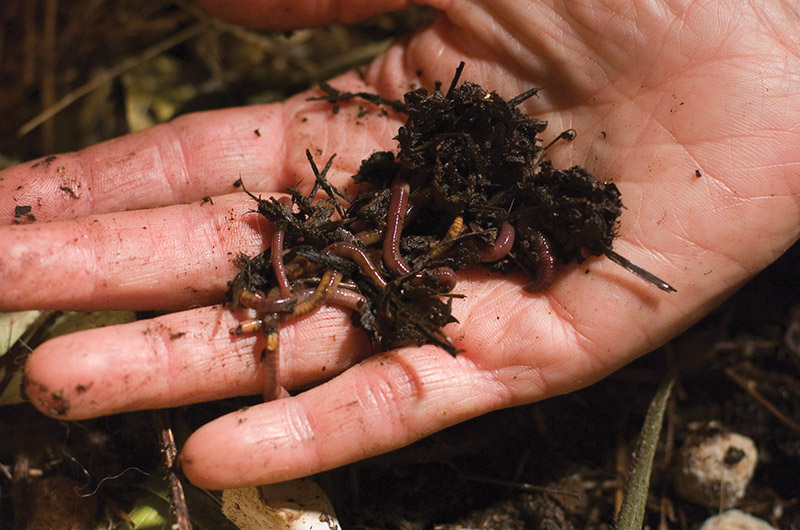Premium Top Quality Red Wiggler Worms - Improve Your Garden's Fertility
Premium Top Quality Red Wiggler Worms - Improve Your Garden's Fertility
Blog Article
Red Wiggler Worms Demystified: Opening the Keys of Vermiculture for Greener Living and Nutrient-Rich Dirt
In the realm of lasting practices for improving dirt high quality and advertising eco-conscious living, red wiggler worms play an essential yet commonly overlooked duty. These modest creatures possess the amazing capacity to change natural waste into nutrient-rich castings that work as a powerful natural plant food. By delving right into the world of vermiculture, one can discover a plethora of benefits that extend far beyond traditional composting methods. Understanding the intricacies of taking care of these worms, optimizing their setting, and utilizing their spreadings can cause a greener way of life and much healthier soil for plants to flourish.
The Role of Red Wiggler Worms
Red Wiggler worms play an important role in composting systems by effectively breaking down organic issue into nutrient-rich spreadings. These starved eaters eat a range of natural products, such as kitchen area scraps, yard waste, and paper items. As they feed, the worms' digestive procedures break down the natural issue right into a penalty, dark, and nutrient-dense material called worm spreadings or vermicompost.
The spreadings produced by Red Wiggler worms are very beneficial for dirt health and plant development. They are rich in vital nutrients like nitrogen, potassium, and phosphorus, which are crucial for supporting healthy plant growth. In addition, worm spreadings consist of beneficial microorganisms and enzymes that aid enhance soil structure, increase water retention, and improve nutrient uptake by plants.
Benefits of Vermicomposting

It enhances soil framework, improves soil aeration, and enhances soil dampness retention. Vermicompost additionally enhances the dirt with vital nutrients like potassium, nitrogen, and phosphorus, advertising plant development and general soil fertility.
Furthermore, vermicomposting assistances lasting gardening practices by offering a chemical-free and natural choice to artificial fertilizers. Red Wiggler Worms. This eco-friendly method not just enriches the soil but likewise assists lower dependence on dangerous chemicals, advertising a greener and more lasting way of horticulture
Setting Up a Worm Container
When establishing a worm bin for vermicomposting, proper configuration is vital to make sure the success of the composting process. The primary step in establishing up a worm container is choosing a suitable container. This can be a plastic bin or wood box that offers adequate space for the worms to move around and has correct water drainage holes to prevent waterlogging. Next, a bedding product such as shredded newspaper, cardboard, or coconut coir must be included to the container. This bed linen offers a comfortable atmosphere for the worms and aids keep dampness degrees.
After adding the bedding, introduce the red wiggler worms to the container. The worms should after that be offered with food scraps such as fruit and vegetable peels, coffee grounds, and eggshells.
Frequently check visit the site the moisture degrees and temperature in the worm bin to make sure ideal problems for the worms. With appropriate setup and maintenance, the worm bin will effectively transform organic waste into nutrient-rich compost for your plants and yard.
Harvesting Worm Spreadings
To successfully gather nutrient-rich worm castings from your vermicomposting system, a methodical harvesting technique is important. When it comes time to gather the worm spreadings, there are a few vital actions to comply with to ensure an effective procedure. To start with, quit adding fresh food scraps away of the worm bin for a couple of weeks before harvesting. This motivates the worms to move to the side with fresh bed linens and food, making it easier to dig the castings from the other side.

Troubleshooting Common Issues
Identifying and dealing with common challenges that might occur throughout the vermicomposting procedure is essential for maintaining a healthy and balanced and effective worm bin. One usual concern that vermicomposters encounter is overfeeding. Adding excess food scraps can cause a build-up of wetness and level of acidity in the worm bin, potentially hurting the worms. To stop this, feed the worms in moderation, guaranteeing that the food scraps are adequately broken down prior to adding extra. One more concern is undesirable smells rising from the worm container. Foul smells indicate anaerobic conditions, usually brought on by overwatering or inadequate ventilation. To fix this, readjust the dampness levels by including dry bedding products like shredded newspaper or cardboard and increase aeration by transforming the bed linens regularly.
In addition, if the worm populace is decreasing or the worms appear harmful, it might be as a result of environmental stressors such as severe temperature levels or pH degrees. Keeping an eye on these variables and making essential adjustments is vital for the health of the worms. check these guys out By fixing these common issues promptly, vermicomposters can ensure a smooth and effective vermicomposting procedure while keeping a flourishing worm populace.

Final Thought
In final thought, red wiggler worms play a critical duty in vermiculture by breaking down natural issue into nutrient-rich soil. Setting up a worm container is important for effective vermiculture, and gathering worm castings gives important garden compost for horticulture.
As they feed, the worms' digestive system processes damage down the organic matter right into a fine, dark, and nutrient-dense material recognized as worm spreadings or vermicompost.
The spreadings produced by Red Wiggler worms are very valuable for dirt wellness and plant growth. Adding excess food scraps can lead to a build-up of dampness and level of acidity in the worm container, potentially hurting the worms.In addition, if the worm populace is declining or the worms show up undesirable, it can be due to environmental stressors such as severe temperatures or pH levels. Setting up a worm bin is vital for effective vermiculture, and collecting worm spreadings offers beneficial compost for gardening.
Report this page